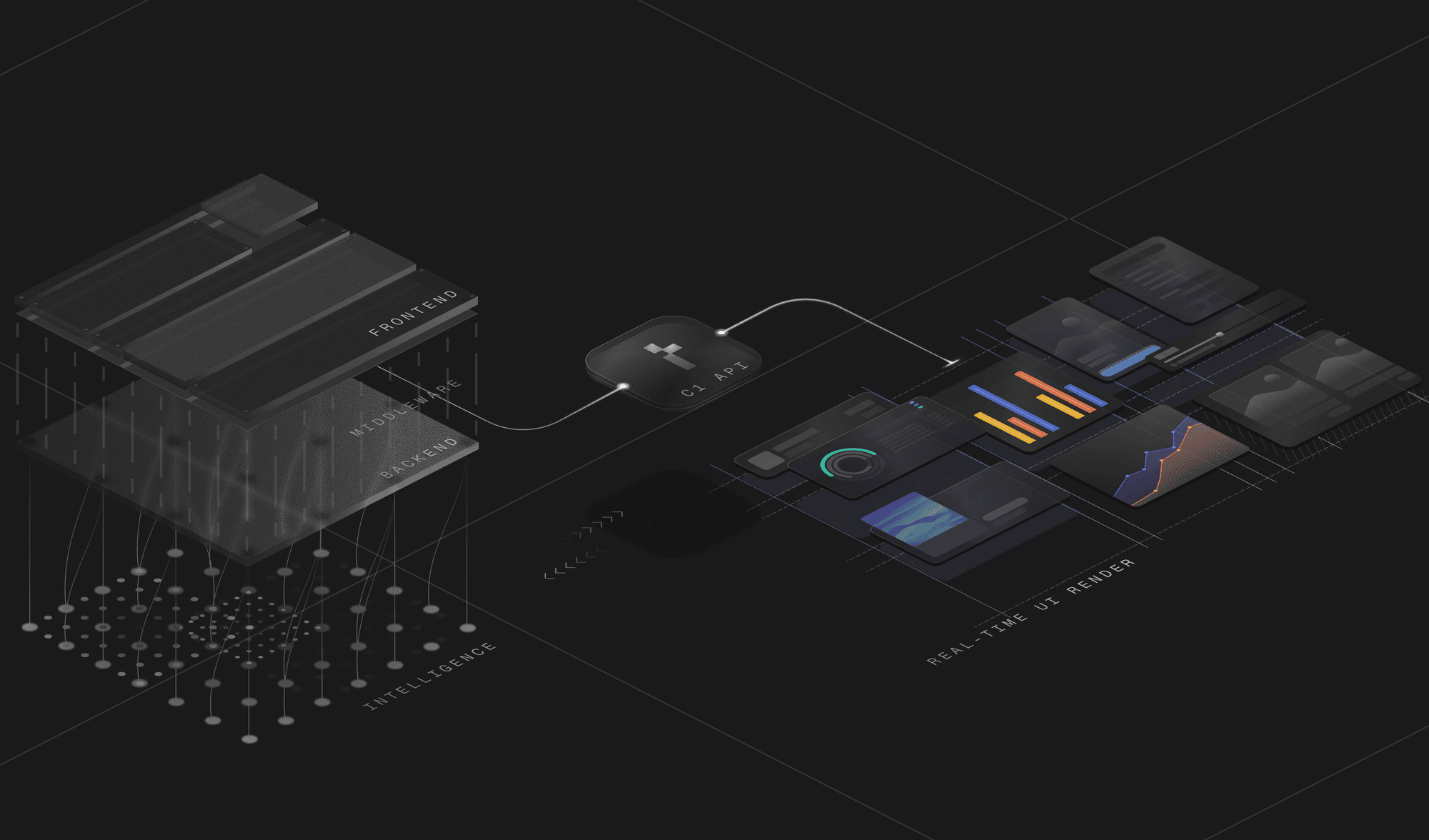Thesys C1: Bringing Dynamic UI Generation to AI Applications
Thesys C1 introduces a generative UI API that transforms static interfaces into interactive, real-time components—addressing a critical gap in how AI applications present model outputs to users.

Breaking Free from Static Interfaces
Most AI applications today face a persistent challenge: their interfaces remain fundamentally static, unable to adapt as language models generate diverse outputs. Thesys C1 tackles this problem head-on with a generative UI API designed to convert model outputs directly into interactive UI elements, creating a bridge between AI inference and user experience.
The platform represents a significant shift in how developers approach AI application architecture. Rather than forcing outputs into predefined templates, Thesys C1 enables interfaces to evolve dynamically based on what the model generates—whether that's structured data, visualizations, forms, or complex interactive components.
How Generative UI Works
At its core, Thesys C1 operates as a middleware layer between your AI model and frontend. When an LLM generates a response, the API interprets that output and automatically renders appropriate UI components in real time. This eliminates the manual mapping developers typically perform between model outputs and interface elements.
The technical architecture leverages several key capabilities:
- Real-time component generation — UI elements render as the model streams output, not after completion
- Type-aware rendering — Different data types automatically map to suitable interface components
- Framework integration — Native support for React and other popular frontend libraries through dedicated SDKs
- Streaming support — Handles partial outputs gracefully, updating the interface incrementally
This approach proves particularly valuable for analytics dashboards, data exploration tools, and any application where output format varies significantly between requests.
Practical Applications
The use cases extend across multiple domains. Analytics platforms can generate custom dashboards on demand. Customer support tools can create contextual interfaces based on issue classification. Data analysis applications can produce interactive visualizations without hardcoding every possible chart type.
By decoupling UI generation from application logic, developers reduce boilerplate code and accelerate time-to-market. The API handles the complexity of component selection and rendering, allowing teams to focus on core business logic rather than UI orchestration.
Technical Considerations
Implementing Thesys C1 requires minimal architectural changes. The React SDK provides straightforward integration points, and the API accepts standard model outputs, making adoption feasible for existing applications. Developers can gradually migrate components to generative UI or adopt it for new features.
Performance characteristics matter in production environments. The streaming architecture ensures users see interface updates immediately, rather than waiting for complete model inference. This creates a more responsive experience, particularly important for long-running operations.
The Broader Implications
Generative UI represents an evolution in how applications adapt to AI capabilities. As models become more sophisticated and outputs more varied, static interfaces become increasingly limiting. Thesys C1 positions itself at the intersection of this trend, offering tooling that grows with model capabilities rather than constraining them.
The platform addresses a genuine developer pain point—the friction between what models can generate and what interfaces can display. By automating this translation layer, it enables more ambitious AI applications while reducing implementation complexity.
Key Sources
- Thesys Official Documentation — https://www.thesys.dev/ — Comprehensive platform overview and API reference
- Tinybird Integration Guide — Real-time generative UI implementation for analytics workflows
- Dev.to Technical Deep Dive — Thesys React SDK capabilities and streaming response handling


